1181 Getting & spending in Lotusland
A Brief View from the Coastal Suite
by Karen Hofmann
Edmonton: NeWest Press, 2021
$21.95 / 9781774390177
Reviewed by Theo Dombrowski
*
 If, come the apocalypse, some powers wanted to recreate the style and design of white, urban life in Canada in general and Vancouver in particular, they would find material aplenty in Karen Hofmann’s novel, A Brief View from the Coastal Suite. They would find details about clothing — a lot of detail about clothing — but also about buildings, rich and poor, inside and out, private and public. Equally, though, they would find recorded different registers of speech, patterns of family life, social values, gender relations, employment structures and so on and so on. On the other hand, if they were to read this book with any sensitivity to tone — and they would have to be sensitive to tone — they just might wonder why they would want to reconstruct such a society.
If, come the apocalypse, some powers wanted to recreate the style and design of white, urban life in Canada in general and Vancouver in particular, they would find material aplenty in Karen Hofmann’s novel, A Brief View from the Coastal Suite. They would find details about clothing — a lot of detail about clothing — but also about buildings, rich and poor, inside and out, private and public. Equally, though, they would find recorded different registers of speech, patterns of family life, social values, gender relations, employment structures and so on and so on. On the other hand, if they were to read this book with any sensitivity to tone — and they would have to be sensitive to tone — they just might wonder why they would want to reconstruct such a society.
No, the novel is not a devastating critique of everything current (or, at least current to 2008, when it is set). Neither, however, does it come even close to being a celebration. It is not a happy book, but neither is it bitter, acrimonious, or tragic. At times it is a funny book — particularly when Hofmann, often dryly, observes types (at a yoga class, or at an art class, for example) or, especially when she gets exactly right the whacky obliviousness of children: her recreation of a school concert, for example, is prime.
At one point Mandalay, one of the chief characters, wonders why she should read novels: after all, “Fiction never seems to be about anyone with a life like hers.” Now, if that isn’t the author’s invitation to the readers of that passage to raise their eyebrows with amusement — and possibly appreciation — then nothing else is. Yes, the novel is about people with lives like Mandalay’s. It is, in fact, about the lives of a large range of middle-aged, urban people. Men and women, manual labourers, unemployed single mothers, artists, accountants, successful corporate career climbers, all the way through to the billionaire owners of private jets — they’re all here.
The success of such a book depends, of course, on the shrewdness of perception of the author, the accuracy of her ear and eye, as well as the range and depth of her knowledge. In those terms, it’s difficult not to feel that Karen Hofmann has it right. In spades. A couple of minor glitches aside, she seems really to know her stuff.
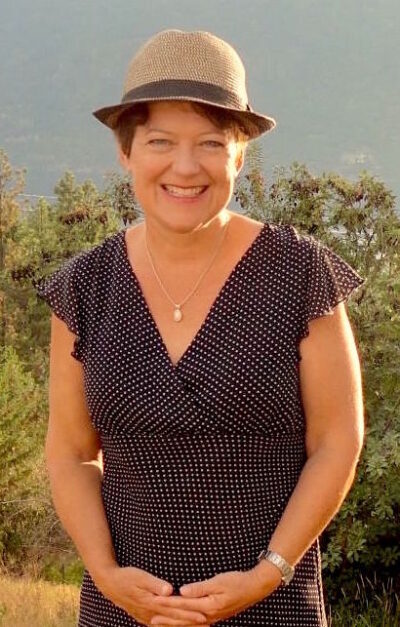
One of her masterstrokes of perception is her bloodcurdlingly accurate mimicking of pretentious language. This is sometimes jargon, sometimes just fashionable register, the language wielded by those affecting insider knowledge or power. One chief character envisages a vastly expensive and complicated new building being “mediated with floating, layered wall panels that will evoke limestone cliffs or waterfalls.” Another character aims differently, but her language is equally pretentious: her art project is, she tells herself, “about the body and liminality and texture and porousness.” Yet another character, a merciless executive, dismisses the changes in the company and human carnage that will result as “a good opportunity to revisit our vision of ourselves and our structures.” And so on.
At two points, the novel records, in exquisite detail, a women’s book club meeting from the point of view of its hostess. The second of these meetings in particular is enough to make most readers wish never to go anywhere near a book club meeting. The wonderful irony, though, is that Hofmann’s own novel is clearly intended (amongst, obviously, other things) to serve as a book selected for exactly that purpose, even down to its inclusion of “Discussion Questions.” And this is where the notion of ordinary lives — most importantly of women — becomes especially colourful.
It is difficult not to imagine much of the book reducing a women’s book club meeting to rueful groans, wistful mutters, or wry laughter — and, it is hard not to believe, confessions. Take for example, the scene where Cleo, exhausted from a full day’s work, sweats impatiently through an agonizingly slow supermarket line in order to whip together a family meal — we know exactly what she serves — only to be met with a chorus of complaints. Or take the scene, brilliantly awful, where eight-year-old Owen spectacularly spills his milkshake all over his aunt’s “forty-thousand-dollar vehicle” with its “pearly-grey faux-suede seats.” The drama amongst the two mothers and four children that follows is the stuff of nightmares.
On the other hand, turn to reflections on the “fierce sweetness” of motherhood, maternal anxieties (“Are we going to survive parenthood?”) and the moments of joy, and you will have a lot of women readers engaging powerfully with their own experiences. The same will be true of the effect produced by the two main characters’ reflections on their aging bodies, the greyness of their relationships with their partners, and the whole patterns of their lives: “she has not had a life of passion, of intensity, of beauty. Her life has been inauthentic, shallow, shaped by others’ wishes. There are decades missing. She can’t get them back; she can’t ever be young again.”
Even one faltering extramarital affair is framed in such a way as to connect with a broad experience. Thinks Cleo, “It seems to her that the right and opportunity to meet anyone, at any time she chooses, is a basic need.” If the seductive Lee sounds straight out of a romantic novel himself — “I want to give you all the pleasure you deserve” he murmurs — well, then perhaps that is part, too, of the author’s appeal to general experience. It has to be said, in addition, that most of the men really, really do not come off well: a group of women readers would have plenty of fuel for discussion there.
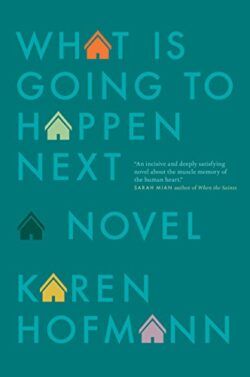
But everything isn’t the stuff of daily life (if an affair can be considered that.) Much, too, is extraordinary. Readers of Karen Hofmann’s first novel with the same four siblings, What is Going to Happen Next, will already know that the broken family from which they came and their lives either as foster children or as an adopted son were remarkable, and remarkably evoked. In this novel, a kind of postponed sequel, the extraordinary first enters in the form of Veronika, the Estonian woman (her personality itself remarkable) whom Cliff has courted by email and who has become his wife. This is not an ordinary relationship.
It is towards the end of the novel, though, that the author elevates the ordinary into the harrowing. In rapid succession she creates scenes with violence (of a sort) between men and women, mental crises, physical breakdown and collapse, and, most harrowingly, a disastrous accident. Here, clearly, she trades in the ordinary for enough of the extraordinary to build something like a climax to the novel.
These harrowing events, however, though they grow organically out of the relationships and circumstances, are not part of linear plot lines. How, then, without plot lines, does the novel work? Hofmann does not use “suspense” in a theatrical or clearly structural way. Yes, there are some uncertainties and decisions chief characters face, and in the course of some months they face (or evade) them.
However, two main methods give the novel its main forward drive. First, the novel works largely cinematically, as a sequence of vividly detailed scenes, though interspersed with inner monologues. Any reader with a visual imagination will feel at times as if the experience of the novel and of a film are not far apart.
Second, though, and more strikingly, the novel works as a kind of debate. Some of this debate is framed almost as a literal debate — scene after scene develops as characters discuss or argue opposing views or plans, or challenge each other’s. Some of the debate is thoughtful, considered; some is bitter, acrimonious. Some of the debate, too, is internal. All three main characters pull the readers into their thoughts, their anxieties, uncertainties, a large portion of those based on the need to make decisions, plans, revisions.
The sense of debate is developed further because of the sheer range of characters and their almost polar opposition to each other. The most primary of these are the two sisters Cleo and Mandalay, in many ways like the sisters of Jane Austen’s Sense and Sensibility. Cleo is (primarily) rational, driven, calculating, restless: “she can’t remember the last time she did something that wasn’t rational, calculated, that had no specific point.” Mandalay, her sensibility verging on “new age,” is intuitive and emotional. Any guesses on which has a full time, stressful, high profile corporate job in design and which is a stay at home mother with a hesitant interest in finishing off her art degree?
Equally in opposition are the two brothers, Cliff and Ben, one an honest, hardworking, anxious, and inarticulate gardener/landscaper, the other, his ostensible business partner, dishonest, lazy, confident, and glib. Add to these two fundamental pairs their partners, and the oppositional positions intensify and enrich.
Cleo’s husband, an accountant, is dogmatic, money-shrewd, hard-nosed and self-centred. Mandalay’s (former) partner is dogmatic, money-shrewd, hard-nosed and self-centred. Cliff’s wife, Veronika from Estonia, however, is a surprise: in all senses she is as brazen as her husband is sensitive. Then, of course, there are the friends. And the children. The grounds for argument, discussion, conflict…debate…are ample, to say the least.
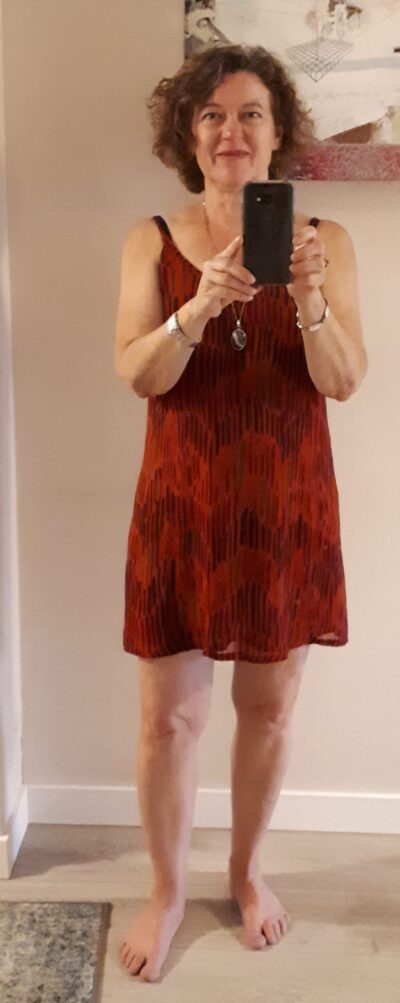
It is one of the most interesting appeals of the book that, though it does thrive on these patterns of debate, those debates are centred primarily not on personality (as is the case with many Novels of Relationships) but on social values. Which is better for a child’s opportunities, a private school or a public school? Which is better for a child’s social awareness, a house in the “ethnic” part of a city or in the culturally elevated suburbs? Is it more important to be loyal to one’s brother or to one’s business and wife’s financial security? Which is better for a woman’s fulfilment and balance, a part time job or a full time job?
In framing these debates, Hofmann is cagey. While it is unquestionable that she has her own social values (and they are largely evident) she doesn’t always show her hand, or, at least, overplay it — or, more to the point, she directs her characters in such a way that, in pushing their own values, they can appear, to different extents and in different ways, to be grasping at goals that are little more than hemp and feather dream-catchers, or, more often, golden idols. While sometimes exposing the fatuousness of some values and, sometimes implicitly endorsing others, Hofmann doesn’t allow any of the characters (with the possible exception of Cliff, the good-hearted gardener) to get off scot free.
The fact is, however, the novel is set in 2008 for a reason. 2008, most readers will hardly need reminding, was the year of the biggest financial crisis of the last few decades.
Knowing that it is 2008 — references to the Lehmann brothers toll ominously — readers can never escape the sense of impending doom hanging over the chief characters as, oblivious of what is coming, they fret and mull over decisions with financial implications. Hofmann is not the first to have tapped into the novelistic potential of setting a personal story against the backdrop of this financial crisis: most famously, perhaps, The Forgotten Waltz, the brilliant novel by Booker Prize winner Anne Enright, likewise demonstrates how the crisis of 2008 and private lives interact tellingly.
For, yes, when the children play a round of Monopoly at one point, they are clearly evoking the single greatest dynamic force that impels and compels the lives of the main characters. It has been said the nineteenth century novel could not have developed as it did without its concerns with money. That tradition clearly is not dead. As Mandalay thinks, at one point, “Duane has that streak in common with Cleo and Trent: for him, money is the big event.” Indeed, the epigraph of the book could well have been William Wordsworth’s lament, “Getting and spending we lay waste our powers.”
Is the novel, then, a takedown of capitalism? No. Is it an exposé of the way in which people’s very lives — not just their financial success — are intertwined with money, its getting and spending? You can bet your bottom dollar.
*
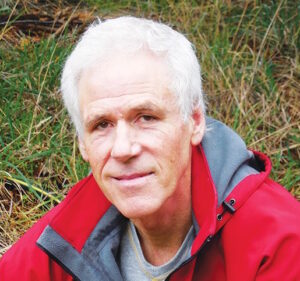
Born on Vancouver Island, Theo Dombrowski grew up in Port Alberni and studied at the University of Victoria and later in Nova Scotia and London, England. With a doctorate in English literature, he returned to teach at Royal Roads, the University of Victoria, and finally at Lester Pearson College at Metchosin. He also studied painting and drawing at the Banff School of Fine Arts and at UVic. Editor’s note: Theo has written and illustrated several coastal walking and hiking guides, including Secret Beaches of the Salish Sea (Heritage House, 2012), Seaside Walks of Vancouver Island (Rocky Mountain Books, 2016), Family Walks and Hikes of Vancouver Island (RMB, 2018, reviewed by Chris Fink-Jensen), as well as When Baby Boomers Retire. He has also reviewed books by Barry Kennedy, Ann Shin, Lynne Quarmby, Renate Belczyk, Deni Ellis Béchard, Aislinn Hunter, and Anne Enright, among others. Visit his website here. Theo Dombrowski lives at Nanoose Bay.
*
The Ormsby Review. More Books. More Reviews. More Often.
Publisher and Editor: Richard Mackie
The Ormsby Review is a journal service for in-depth coverage of B.C. books and authors. The Advisory Board consists of Jean Barman, Wade Davis, Robin Fisher, Cole Harris, Hugh Johnston, Kathy Mezei, Patricia Roy, Maria Tippett, and Graeme Wynn. Scholarly Patron: SFU Graduate Liberal Studies. Honorary Patron: Yosef Wosk. Provincial Government Patron since September 2018: Creative BC
“Only connect.” – E.M. Forster
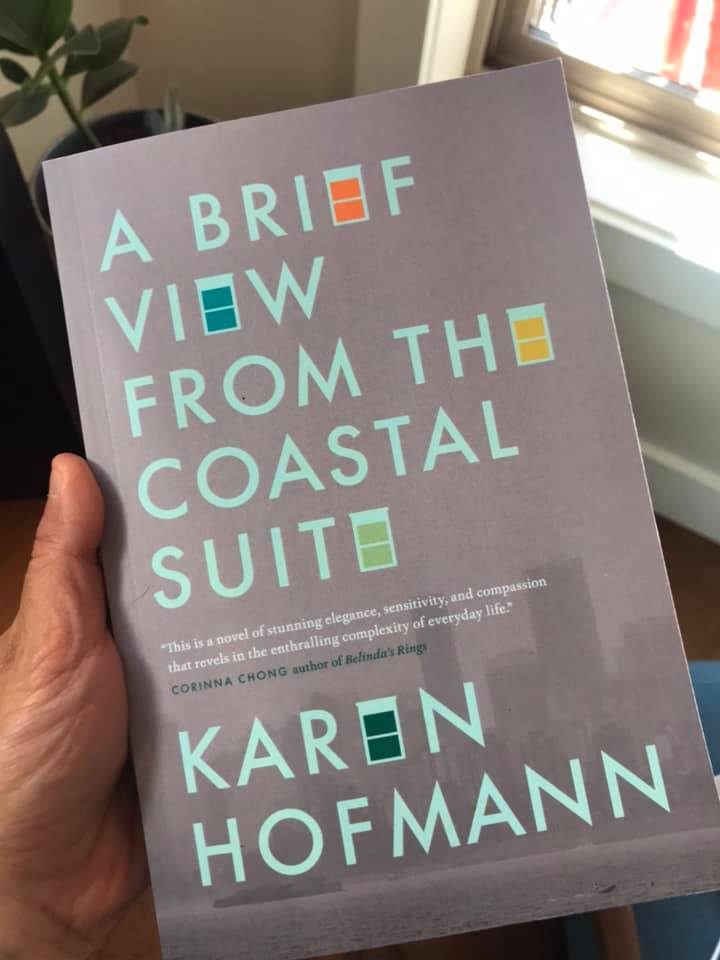
5 comments on “1181 Getting & spending in Lotusland”